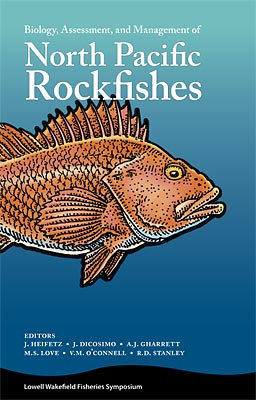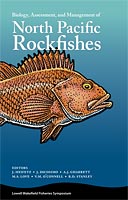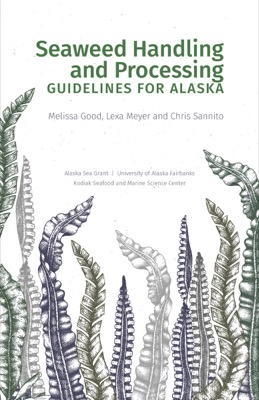
Past, current, and future management of commercial fisheries for black rockfish in the Kodiak Management Area
L.A. Mattes, and N.H. Sagalkin
- Price: $2.10 Sale: $0.00
 This is part of Biology, Assessment, and Management of North Pacific Rockfishes
This is part of Biology, Assessment, and Management of North Pacific Rockfishes| Format | Price | |
|---|---|---|
| PDF download [908.2 KB] Bypass cart and download |
Free | Add to Cart |
Description
Commercial harvest of black rockfish, Sebastes melanops, in the Kodiak Management Area located in the central Gulf of Alaska began in the early 1990s. Prior to 1997, the National Marine Fisheries Service (NMFS) managed black rockfish within the Exclusive Economic Zone (EEZ) as part of the pelagic shelf rockfish group that included dusky rockfish S. variabilis, yellowtail rockfish S. flavidus, and widow rockfish S. entomelas. Biomass of the pelagic shelf rockfish group was estimated by the annual NMFS survey, and annual quotas were set for the entire group. The majority of the biomass for the group was composed of dusky rockfish. When a directed commercial fishery developed for black rockfish, a large portion of the harvest of the pelagic shelf rockfish group became composed of black rockfish, and the Alaska Department of Fish and Game (ADFG) was concerned with harvest levels. While black rockfish predominately occur inside state waters of Alaska, misreporting of harvest from adjacent federal waters was common. In 1997, as a protective measure, the North Pacific Fishery Management Council (NPFMC) separated black rockfish from the pelagic shelf rockfish group within its Gulf of Alaska groundfish fishery management plan (GOA FMP). In 1998, the NPFMC removed black rockfish from the GOA FMP and ADFG's management authority was extended from 3 miles to the offshore boundary of the EEZ.
In order to distribute effort, ADFG established guideline harvest levels for seven districts in the Kodiak Management Area. Quotas within management districts were monitored through landings reported by statistical areas. Black rockfish populations appear stable; however, due to the sensitivity of this species to overexploitation and lack of population assessment, ADFG proposed a mandatory logbook requirement that was adopted during the January 2005 Alaska Board of Fisheries meeting. Logbook data provide more resolution on fishing locations than from statistical areas. Possible future management based on logbook data is discussed.
Item details
- Item number: AK-SG-07-01r
- Year: 2007
- DOI: https://doi.org/10.4027/bamnpr.2007.18



